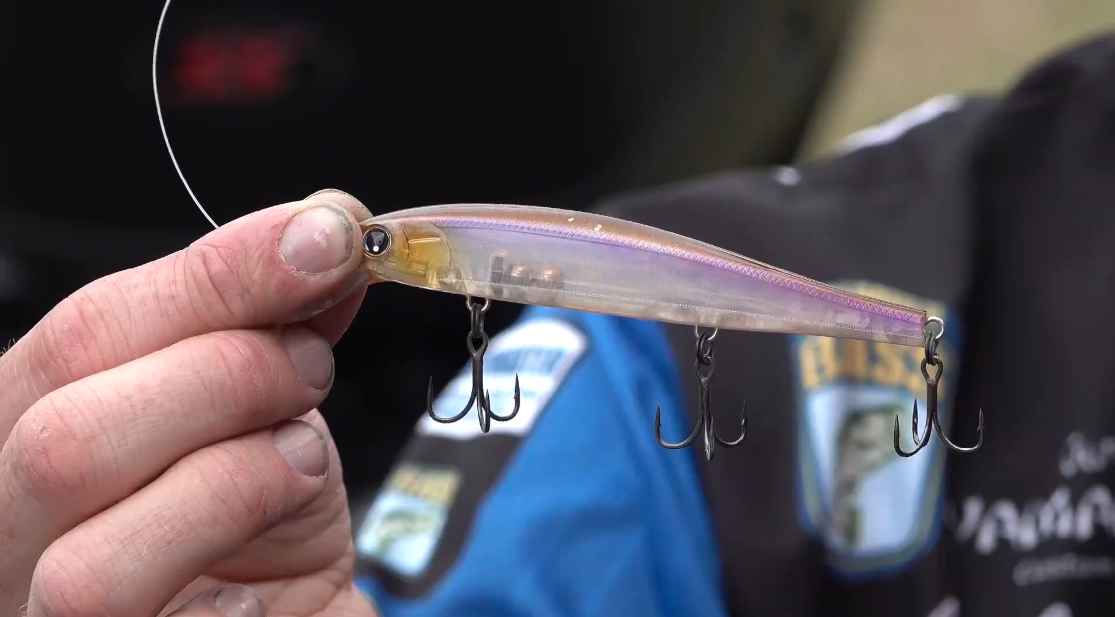
Anglers visiting Watts Bar Lake can enjoy a bonus catch of smallmouth and largemouth during spring. What makes the trip worthwhile is you can target one or both when they are most active during prespawn.
“Largemouth and smallmouth don’t spawn at the same time, and that’s why it’s so worth coming to Watts Bar in spring,” says Knoxville native Brandon Card, also a Bassmaster Elite Series pro.
“Prespawn bass are more active, searching for food as they get ready for the spawning cycles,” he adds. “They are also on the move toward shallower water, so all it takes is intercepting them along their migration routes.”
Searching for migrating bass is worth the effort when you dial into their location. The reward is big fish that can be locked into a pattern. Card uses two reaction baits to widen the strike zone, and the baits are also capable of quickly and effectively covering water.
“Covering water is key for prespawn bass,” adds Card. “You need to keep a bait in the water, moving, until they are located.”
Card favors jerkbaits and lipless crankbaits to get the job done. He uses both lures for smallmouth and largemouth, which is favorable for visiting anglers unsure of where to start in the search-and-find mission.
The native Tennessean focuses on secondary points inside big creeks and channel swings further back toward the spawning areas. Those are two textbook staging areas where the bass spend time to feed or remain stationary following cold fronts. Shelter and ambush points are essential for prespawners, and both provide those needs.
Card advises to experiment with different retrieves for the jerkbait and crankbait, working the lure slow, fast or with erratic moves of the rod tip.
“Let the fish tell you what they want,” he explains.
Secondary points, and points in general, are overly abundant on Tennessee River impoundments like Watts Bar. The textbook approach to eliminating unproductive areas is made easy by focusing on points where pea-sized gravel and softball-size rock converge. Finding the best creek channel bends is equally as easy.
“Look for sheer bluff walls with the presence of football-sized rock,” says Card. “Those irregularities are what attract food and the bass.”
The transition between the sizes of rock is key, because the larger rocks and bluffs signal the presence of deep water, while the smaller rocks offer crawfish habitat.
As the fish near the spawning areas look for visual signs of stumps and scattered rock on the tops of the shallow flats. Largemouth stage on the deeper sides of the flats and feed on the tops of them.
Gear up: Card uses translucent shad pattern Yo-Zuri Minnow Flat 110 Suspending Jerkbaits for clear water; for dingy water he switches to solid colors. Rig up with Hardcore Minnow Flat 110SP suspending jerkbaits. A 7′ Abu Garcia Fantasista Premier Casting Rod with Abu Garcia Revo MGX Low Profile Reel works best. Spool it with 10- or 12-pound Yo-Zuri Top Knot Mainline. He also uses a 5/8-ounce Yo-Zuri Rattl’N Vibe with 7′ Fantasista rod and Revo STX Low Profile Reel. Spool it up with 16-pound Top Knot Mainline.
About the lake: Watts Bar lake is located on the Tennessee River about midway between Knoxville and Chattanooga. The lake begins at Fort Loudon Dam and stretches 72 miles to Watts Bar Dam. The Clinch River connects to the main channel of the lake. Watts Bar covers 39,000 acres of surface water.
Other fun: Visits to Knoxville and Chattanooga are worth the time. You can enjoy spring festivals and other attractions that can provide a day or weekend’s worth of fun.
Plan your trip: tnvacation.com





